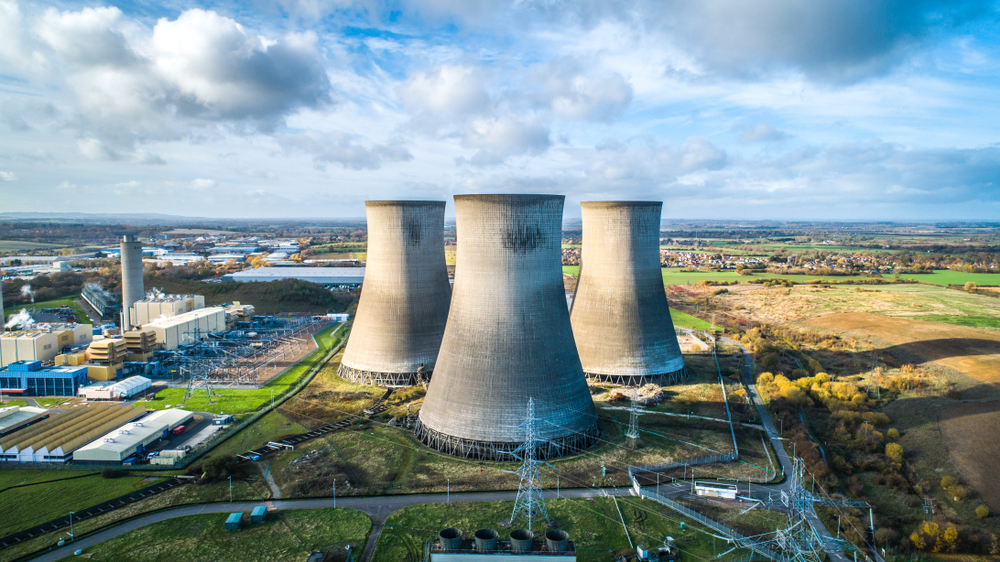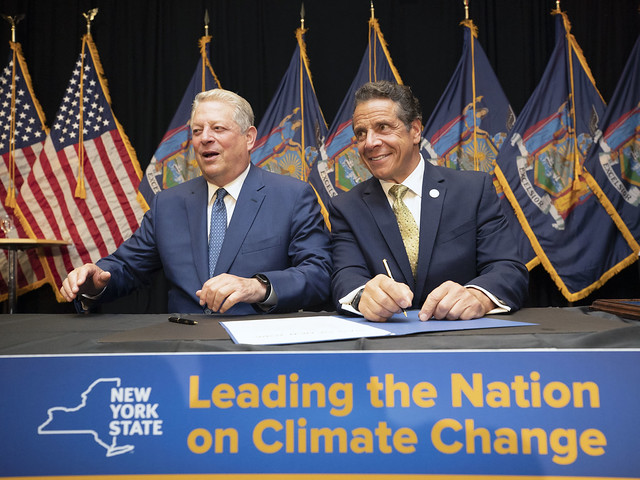
When President Eisenhower opened America’s first commercial nuclear power plant in May 1958, nuclear’s future looked bright and popular. After a slow start, by the late 1960s many nuclear plants were under construction in the US, with most of the 100+ reactors coming online in the 1970s and 1980s. By today’s standards the safety features and standards of those 1960s reactors would be considered woeful, much like passenger jets of the time, yet accidents were incredibly rare with both, and radiation incidents did not kill anyone at US commercial reactors. Under Democratic and Republican presidents, nuclear power continued to thrive with only tiny pockets of public discontent. Sixty-five years later the politics and public perception of nuclear have changed while the three main motivations for nuclear energy – reliable electricity, lack of emissions, and energy independence – have created schisms within states and nations. Three recent examples from California, New York, and Virginia highlight the realignment.
California is one of several states where explicit climate change concerns and implicit energy cost concerns create tension with nuclear power. CA and NY are among 12 states, all of which voted Democratic in the 2020 presidential election, that ban the construction of new nuclear plants. While California’s legislature has rejected appeals to allow new nuclear plants, in 2022 it passed and Governor Galvin Newsom, a Democrat, signed a bill extending the life of Diablo Canyon, the state’s last operating nuclear plant, from 2025 to 2030. Federal regulators will likely provide a 20 year extension for the plant, enabling the legislature to extend Diablo’s life further. In a November statement after the US Department of Energy, DOE, awarded $1.1 billion to help keep Diablo Canyon open, the governor cited the need to meet climate and clean energy goals, but did not mention the power shortages which nearly led to emergency cuts two months earlier. There are no indications that CA intends to permit, much less encourage, the construction of new nuclear power any time soon, despite passing measures that aim to reduce emissions and pollution and encourage emissions-free electricity, including a ban on gasoline cars from 2035 onwards and a 95% clean electricity grid by 2040.

New York State has made equity an explicit part of its energy plans, reflecting another source of tension in energy and nuclear policy. In 2017 then New York Gov. Andrew Cuomo, a Democrat, announced that the Indian Point nuclear plant near New York City would close, which it did in spring 2021. Three other nuclear plants remain operational in New York. With Indian Point’s closure NYC’s share of emissions free electricity went from about 21% to 3%. Saying that he had tried to close Indian Point for 15 years and that its closure “eliminates a major risk,” Cuomo echoed his father, Mario Cuomo, who in the 1980s issued an order that prevented NY’s completed Shoreham nuclear plant from ever operating, besides some nominal testing. That order passed billions in costs to taxpayers and effectively signaled the end of new nuclear power in New York. Two years after announcing Indian Point’s closure, Governor Cuomo signed the Climate Leadership and Community Protection Act (CLCPA), with great fanfare, which requires New York State to cut emissions 40% by 2023 and 85% by 2050 compared with 1990 levels, and 100% clean electricity by 2040. Notably the bill requires 35% of the benefits of state energy and emissions efforts to go towards disadvantaged communities. What 35% of benefits specifically means remains to be defined, but disadvantaged communities are clearly defined, with 1,736 census tracts being officially disadvantaged. The state has also The New York legislature and governor Kathy Hochul, a Democrat, have made no indication that they plan to repeal New York’s nuclear construction ban, and energy independence has not figured notably in policymaker conversations.
Virginia is taking a different approach, actively embracing nuclear energy, while Governor Glenn Youngkin, a Republican, has strongly supported nuclear power, touted reliability, affordability, and jobs, and spoken little about climate change. In March 2023 Youngkin signed multiple bills to support the development, construction, and workforce of new nuclear reactors in Virginia, including small modular reactors, SMRs, with state funding and policies. While these bills passed the Democratic-controlled state senate, a bill to label nuclear as renewable in April failed along mostly party lines.
State level politics on nuclear energy are likely to continue shifting as the emergence of SMRs and clean energy imperatives, self-imposed or not, continue to push states away from fossil-fuel based electricity over the long term. It remains unclear how much policymakers statements about nuclear power will reflect rather than shape voters’ support for modern nuclear reactors, and how cost, reliability, climate change, and equity concerns will play out not only in governors’ offices and legislatures, but also among the entities that will connect SMRs to the grids, and whose support could hasten or delay the deployment of new nuclear facilities.
